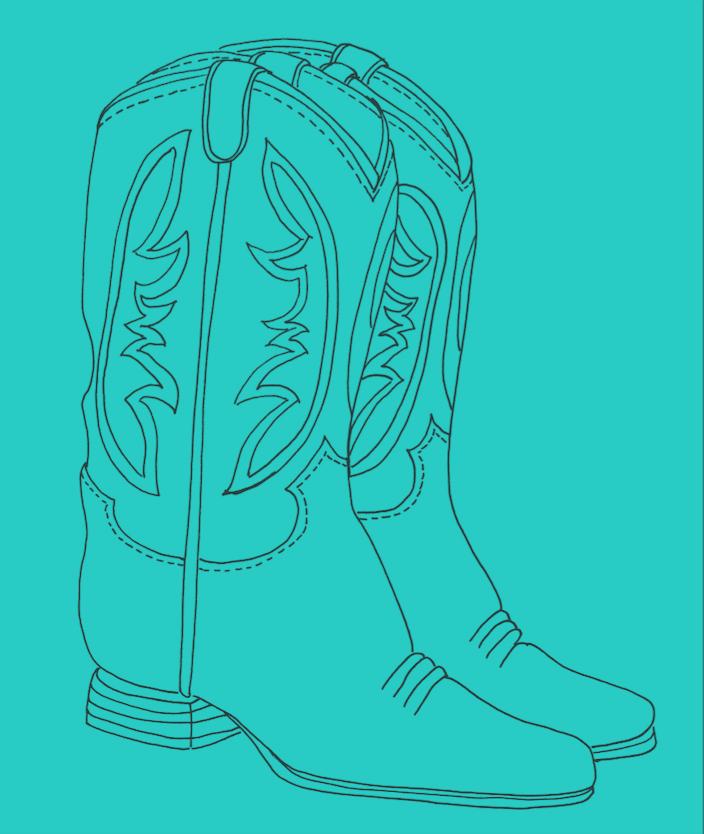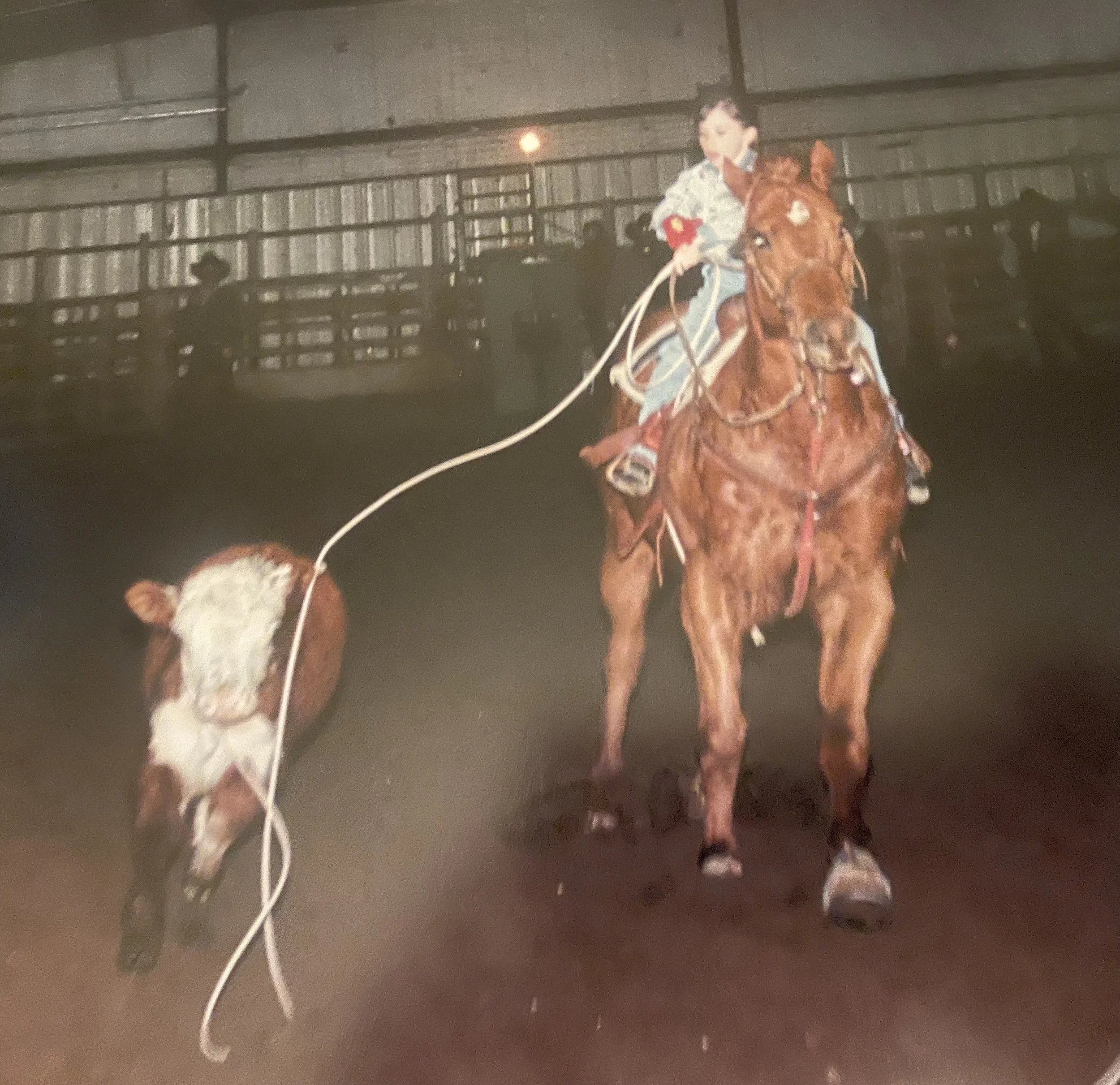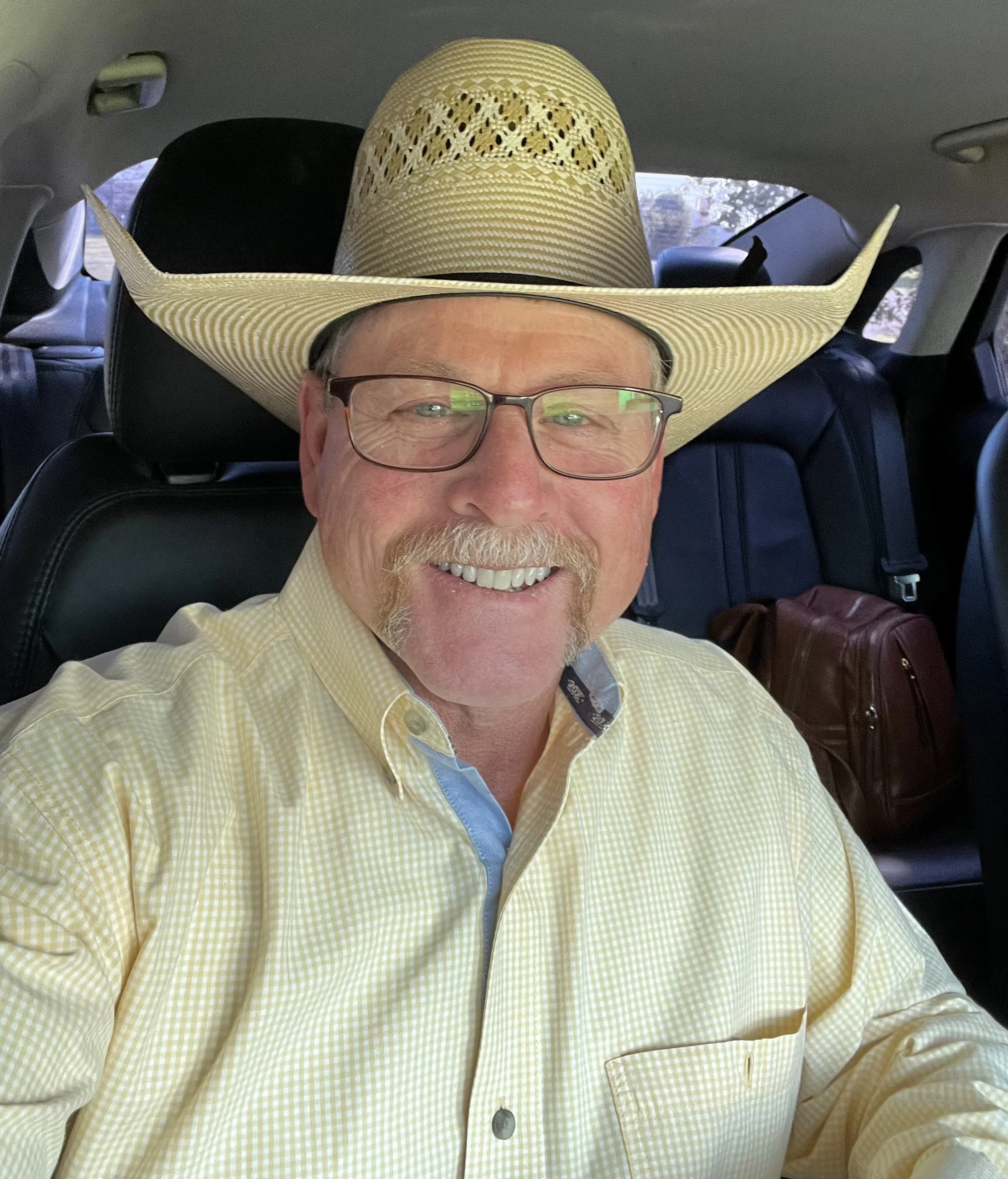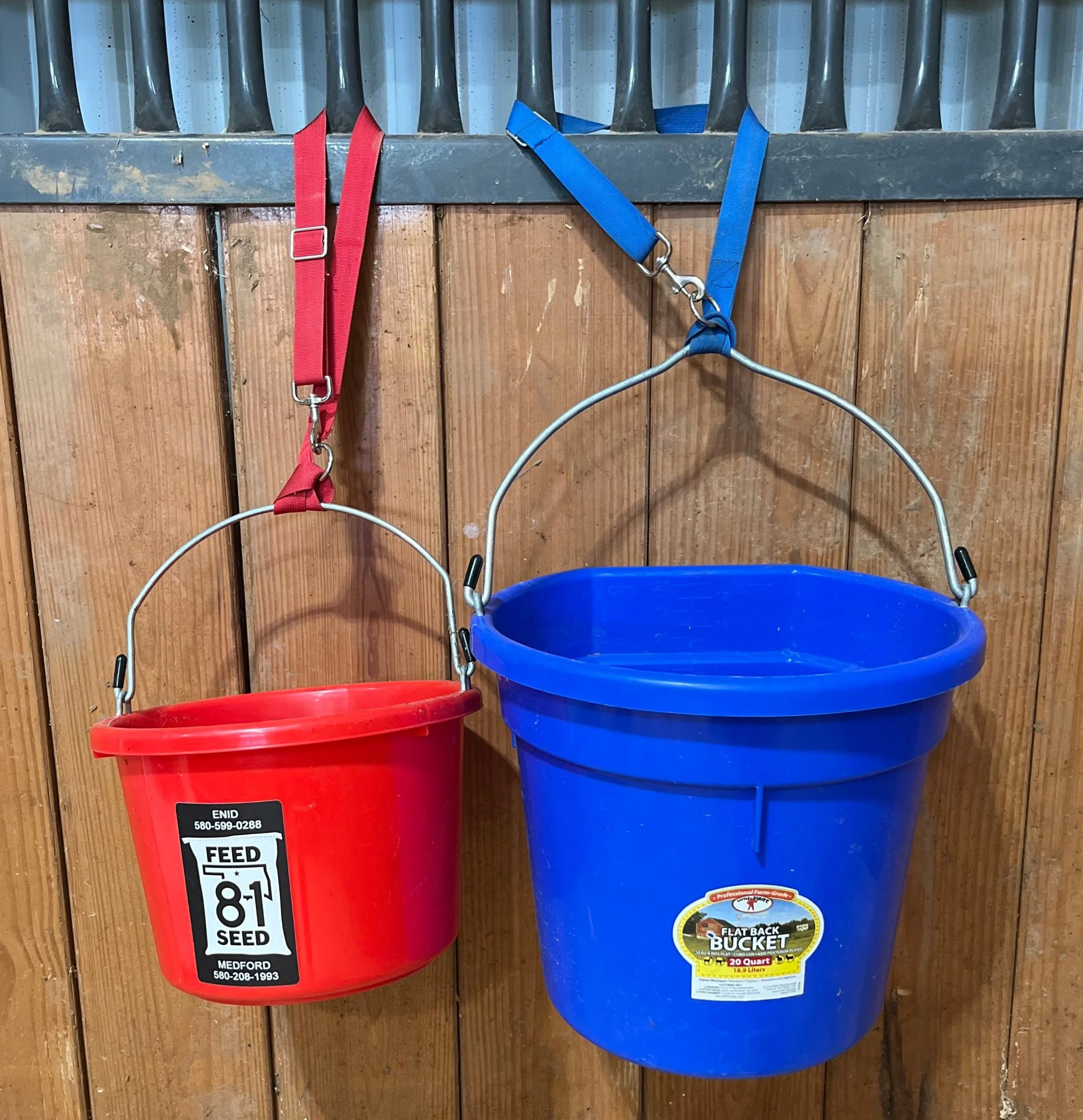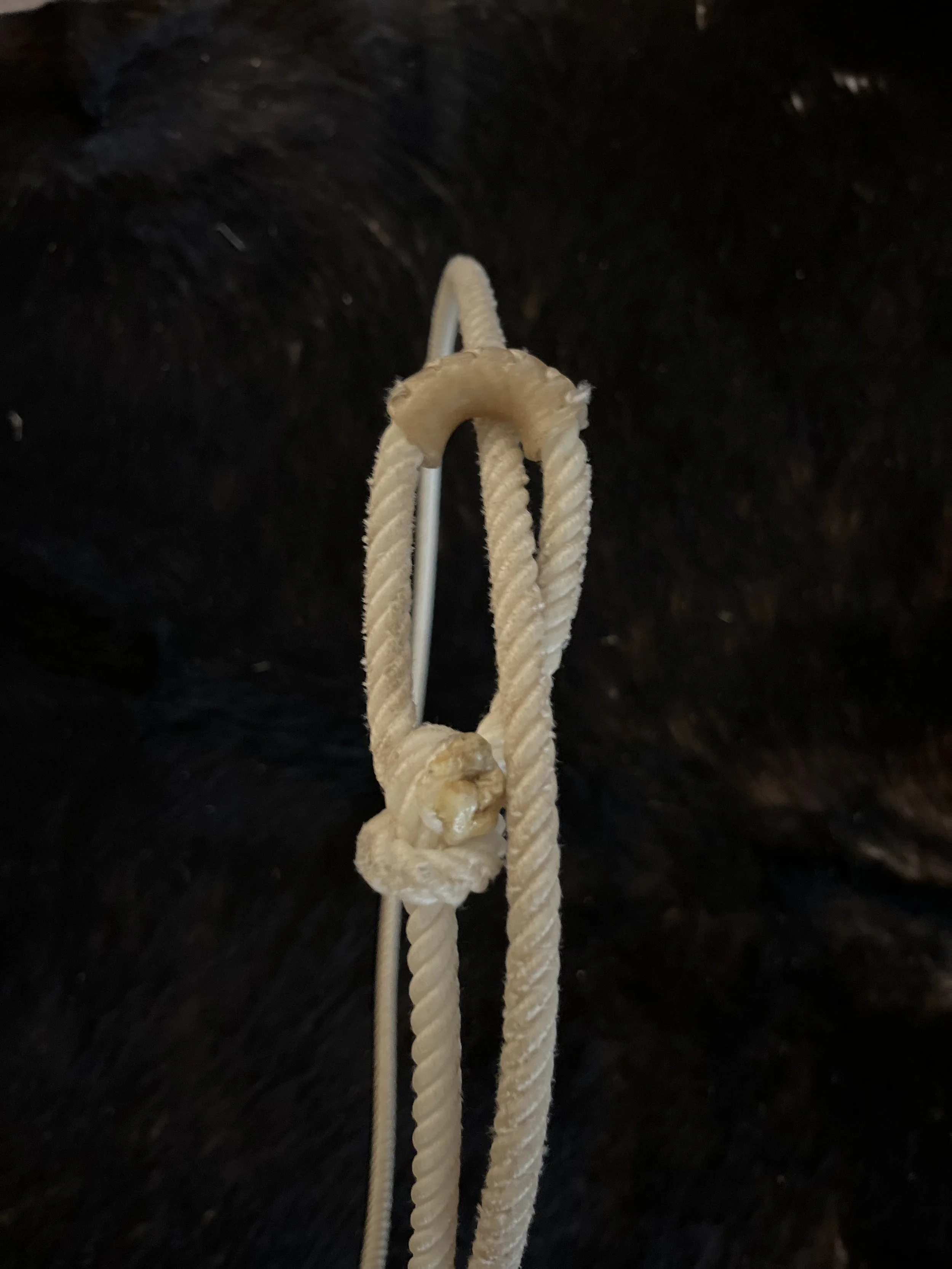Cowkids Only - September 2023
COWKIDS ONLY!
A monthly blog for kids who love riding, rodeo, roping and reading!
Ask a Pro:
Kelsie Chace-Domer
Kelsie Chace-Domer is a 9-time Women’s Professional Rodeo Association world champion, National Finals of Breakaway Roping qualifier, 4-time American qualifier, World Champions Rodeo Alliance Kansas City breakaway roping champion and a Women’s Rodeo World Championships breakaway roping champion. This photo of her and her horse, Little Man, was taken at her first National Finals of Breakaway Roping in Las Vegas.
She took a few minutes out of her very busy September prorodeo schedule to give you a few pointers on roping calves.
Ask a Pro: Kelsie Chace-Domer
Question: What are the top 3 things youth breakaway ropers need to know about swinging their rope?
Kelsie’s Answer:
Use a big enough loop. By using a bigger loop, you are able to learn how to swing with power and momentum properly. If you step on the bottom of your loop and pull the top part up to your shoulder, that is about how big your loop should be. If you feed your loop, it should be that size after you are done feeding. If you don’t feed your loop, start with that size.
Little hands do better with little ropes. Breakaway ropes and calf ropes come in different sizes. These sizes measure their diameter, or how big around they are. A rope with a bigger diameter is going to be heavier and harder to hold. I typically use a 9.5 or a 9.0 and I am an adult, so I would recommend kids at least start with a rope that is 9.5 or smaller. It also can be helpful to cut your rope shorter so you don’t have to carry as many coils. One to two coils is all youth breakaway ropers need.
Cross the strands of your rope over in your hand. The strand that comes out of the hondo crosses the other strand and lays on the right side. (see video below). If you cross your strand over, you are able to control that strand with your pinky. Having that control will give you a better chance of catching no matter where the calf is or what it is doing.
In this video Kelsie Chace-Domer shows you how to properly cross the strands of your breakaway rope. She says crossing the strands helps ropers improve their aim.
Question: Are there any tips or tricks you have for young breakaway ropers to keep their swing right?
Kelsie’s Answer:
Your target when you are roping calves is on the right side of the calf’s neck. When you swing, you want the tip of your rope pointed at your target. Don't get your tip too far down where it is pointed further back on the calf’s body, or have it too high where it is pointed above the calf’s head. If you can’t tell, have your parents video you in slow motion mode. Try to keep your tip pointed at your target with every swing. Your eyes also need to be looking at your target as soon as you nod your head all the way through your throw. In the video below, you will see my tip is pointed at the target on my Smarty dummy and my eyes are looking there too.
Kelsie Chace-Domer says the tip of your rope should be pointed at the right side of the calf’s neck with every swing. She sent us a slow-motion video from the prorodeo in Puyallup, Washington to show us what that looks like.
Question: If you could get in a time machine and tell your younger self something, what would you say?
Kelsie’s Answer:
When I was younger, I loved going to junior rodeos and roping. If I could get in a time machine and go back to when I was a kid, I would tell myself learning about horsemanship is as important, if not more important, than actually roping. If you work on your riding skills as much as you work on your roping skills, you will be hard to beat. A good way to learn, is to ask others who are better than you. If you see an adult who rides a horse really well, ask them to help you improve your riding skills. There also are lots of videos available on horsemanship that you can watch with your parents’ permission.
Kelsie Chace-Domer at age 8 roping on her horse Bozo at a junior rodeo in Kingman, Kansas.
Question: What is your favorite thing to read?
Kelsie’s Answer:
I love reading books about the mental game of rodeo and what it takes to be mentally strong. When I back in the box and nod my head, I have to be able to stay focused on what I need to do to catch and win. I like to read books about how the mind works and how I can keep mine sharp. And, your brain is a muscle and one way to keep it strong is to read books!
Cowkid Devotional
By High Call Ministries Pastor, Kelly Cronkhite
Kelly is not your typical pastor. He’s a Jesus-loving cowboy, rancher and roper.
Have you ever had a day where you felt like you couldn’t do anything right? Maybe that day happened to be at a junior rodeo. Did you miss your breakaway calf, then have your goat get up and knock over poles and barrels all on the same day? Just because you believe in God and pray does not mean you are always going to win. God uses struggles and challenges to grow our faith and trust in Him. If you have a bad day, use it as an opportunity to thank God for giving you the ability to even be at the junior rodeo at all. There are many kids in the world who only get to be cowboys in their dreams. God put you in a family that would allow you to rodeo for a reason. Thank Him for your horses, your parents, your friends and your family. When you start thanking God for all the good things in your life, even when you are having a bad day, you are growing your faith.
“So do not throw away this confident trust in the Lord. Remember the great reward it brings you! Patient endurance is what you need now, so that you will continue to do God’s will. Then you will receive all that He has promised.” - Hebrews, Chapter 10, Verses 35 and 36.
Horse Care Tip of the Month
By Equine Veterinarian Zach Bruggen
Did you know horses care what color their water bucket is? It’s true. A research study in Australia discovered horses drink more water out of turquoise buckets than they did out of light blue, light green, green, yellow and/or red buckets. Hopefully, you have never experienced this, but I see a lot more cases of colic in the fall and winter than I do in other seasons. This is because horses don’t drink as well when the weather is cold. When they don’t drink enough water, they can colic, which is a big term for stomach aches in horses. Some cases of colic, can be very serious and even deadly for your horse. So, what color are your buckets? If you need new buckets, maybe buy some that are turquoise! No matter what color your buckets are, it is most important that the water in them is fresh, clean and not frozen. Horses need about 10 gallons of water each day to stay hydrated. Most buckets designed for watering horses are five gallons. So, if you have one horse in a pen or stall, they will need to drink at least two buckets each day.
10 gallons of water EVERY DAY!
The red bucket is too small for watering horses. The blue bucket is a 5-gallon bucket. Horses should drink at least two, full 5-gallon buckets of water every day. That’s 10 milk jugs full of water every single day!
Rodeo Word of the Month
Hondo/Honda
Hondo
This is considered the “eye” of the rope. The rope passes through the hondo to form what makes your loop. When you pull your slack, the rope goes back through the hondo, letting your loop come tight. Some people say hondo, some say honda. The truth of the matter is, the knot that forms the hondo is called a honda knot. How does your family say it?
Rodeo Math Problem of the Month
Elsie and Max are competing against each other in a match roping. If Elsie ropes her calves in 4 seconds, 5 seconds and 3 seconds, and Max ropes his calves in 5 seconds, 3 seconds and 6 seconds, who is the winner of the match roping?
Rodeo Reading Comprehension
Problem of the Month
Elsie and Max are watching older kids rope the breakaway calves at their junior rodeo. Their age groups are after the older kids, so watching the older kids rope the calves helps them know what the calf they draw will do. During the older age division, Max and Elsie saw that calf number 3 ran straight. Calf number 2, was slower than the rest of the herd. Calf number 1, ran left and calf number 4, was fast. When the draw was posted, Elsie drew calf number 1 and Max drew calf number 2. What should Elsie and Max expect their calves to do?

